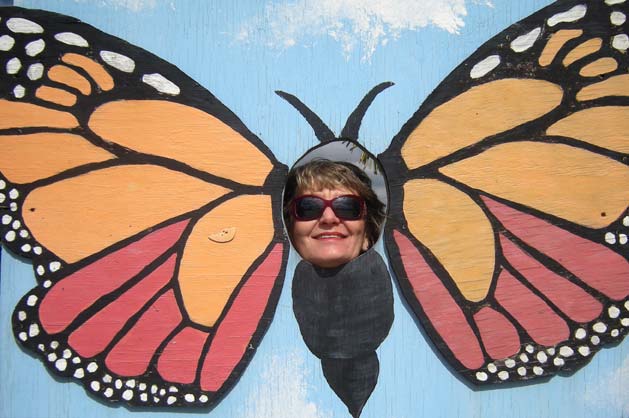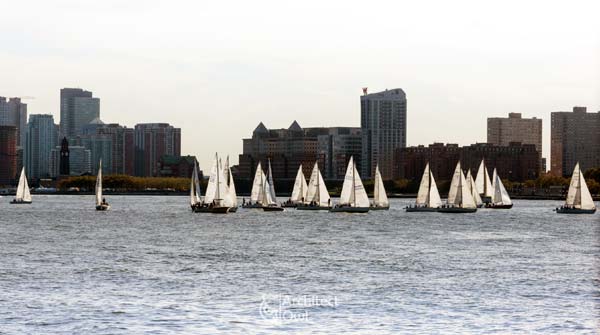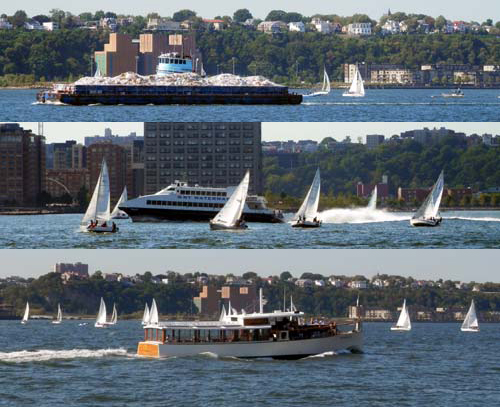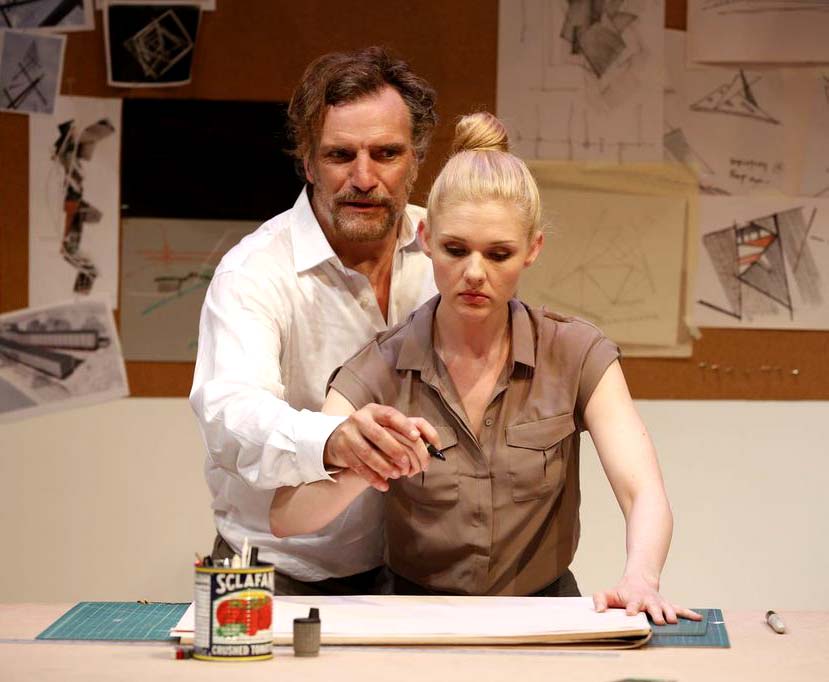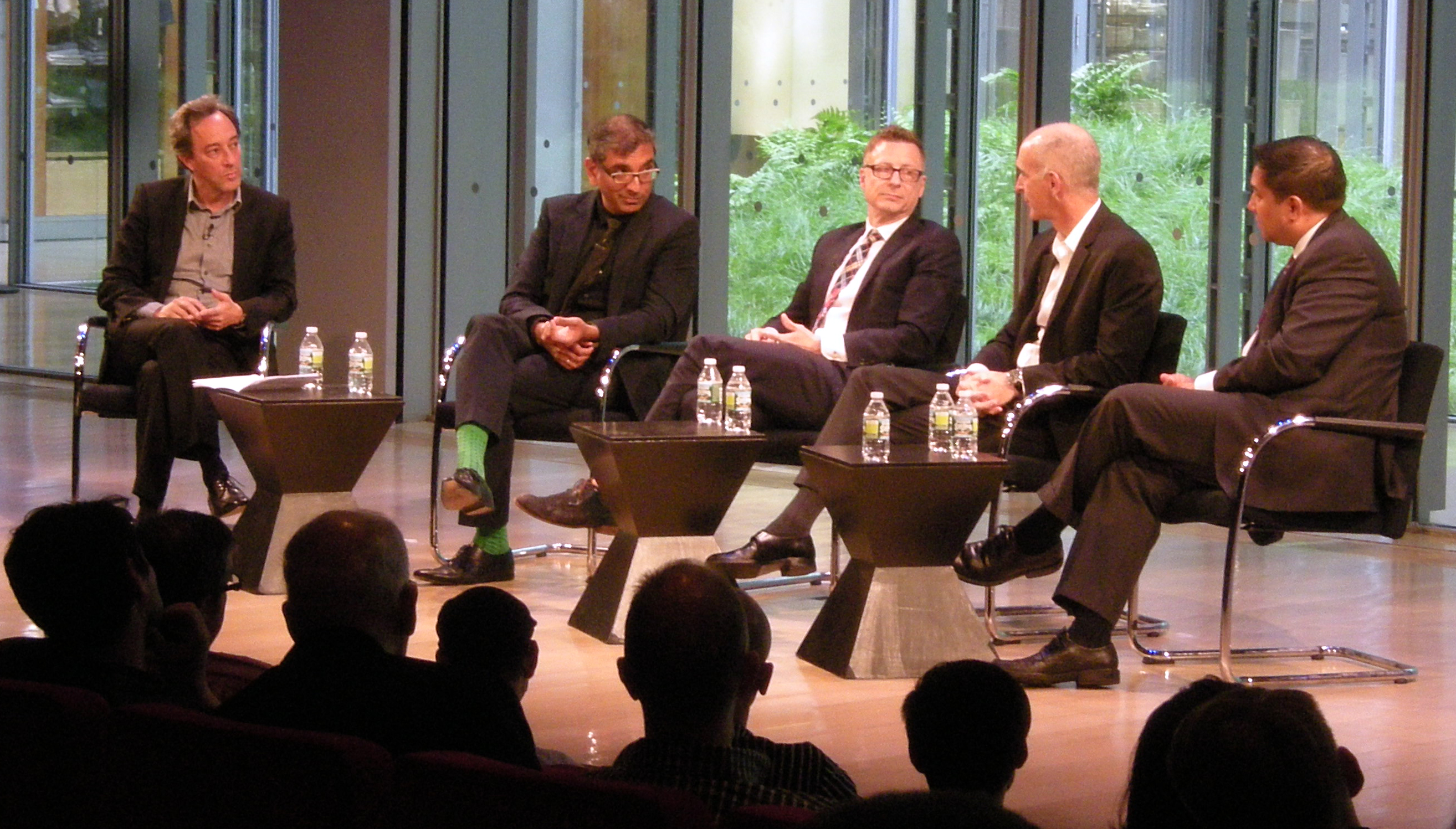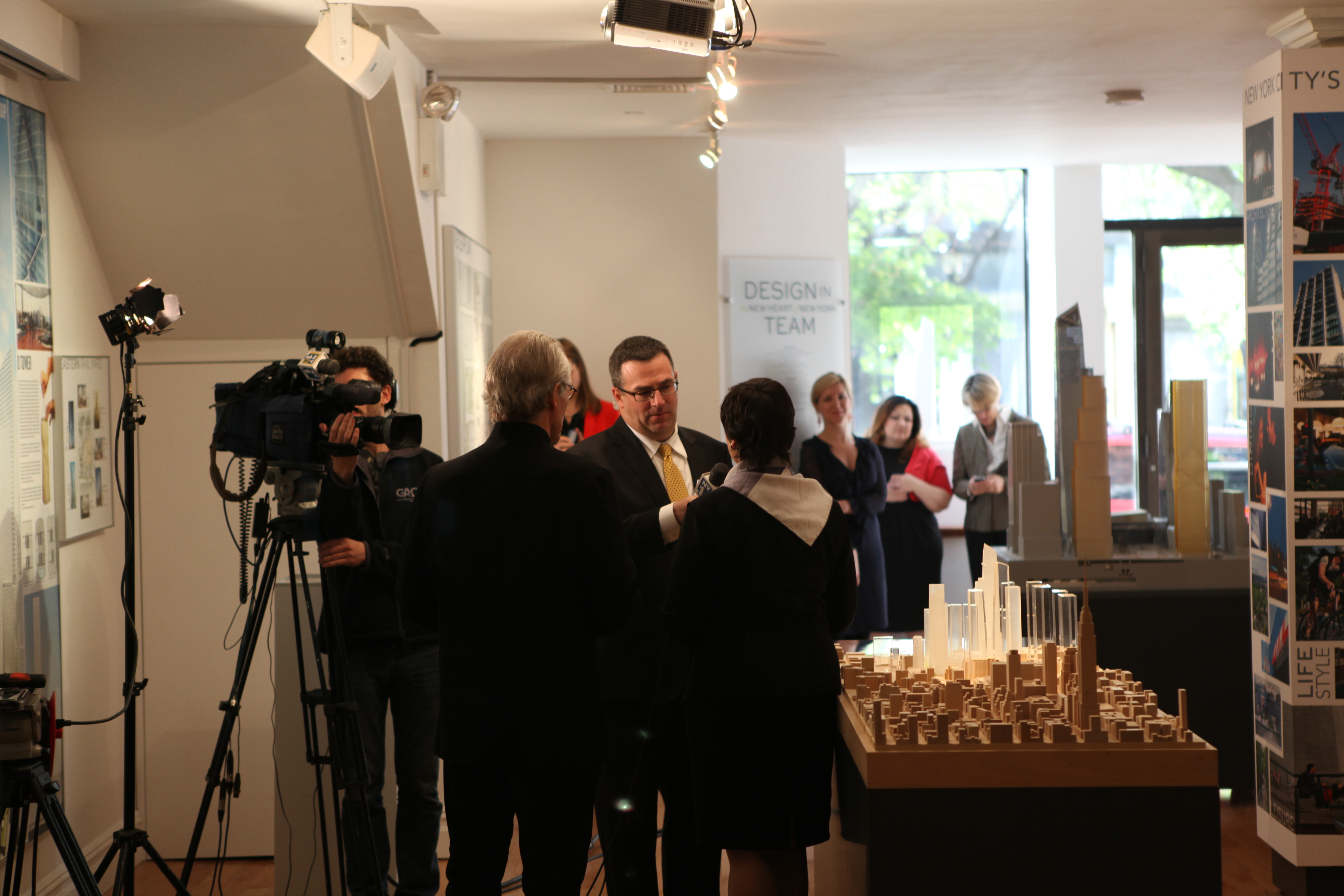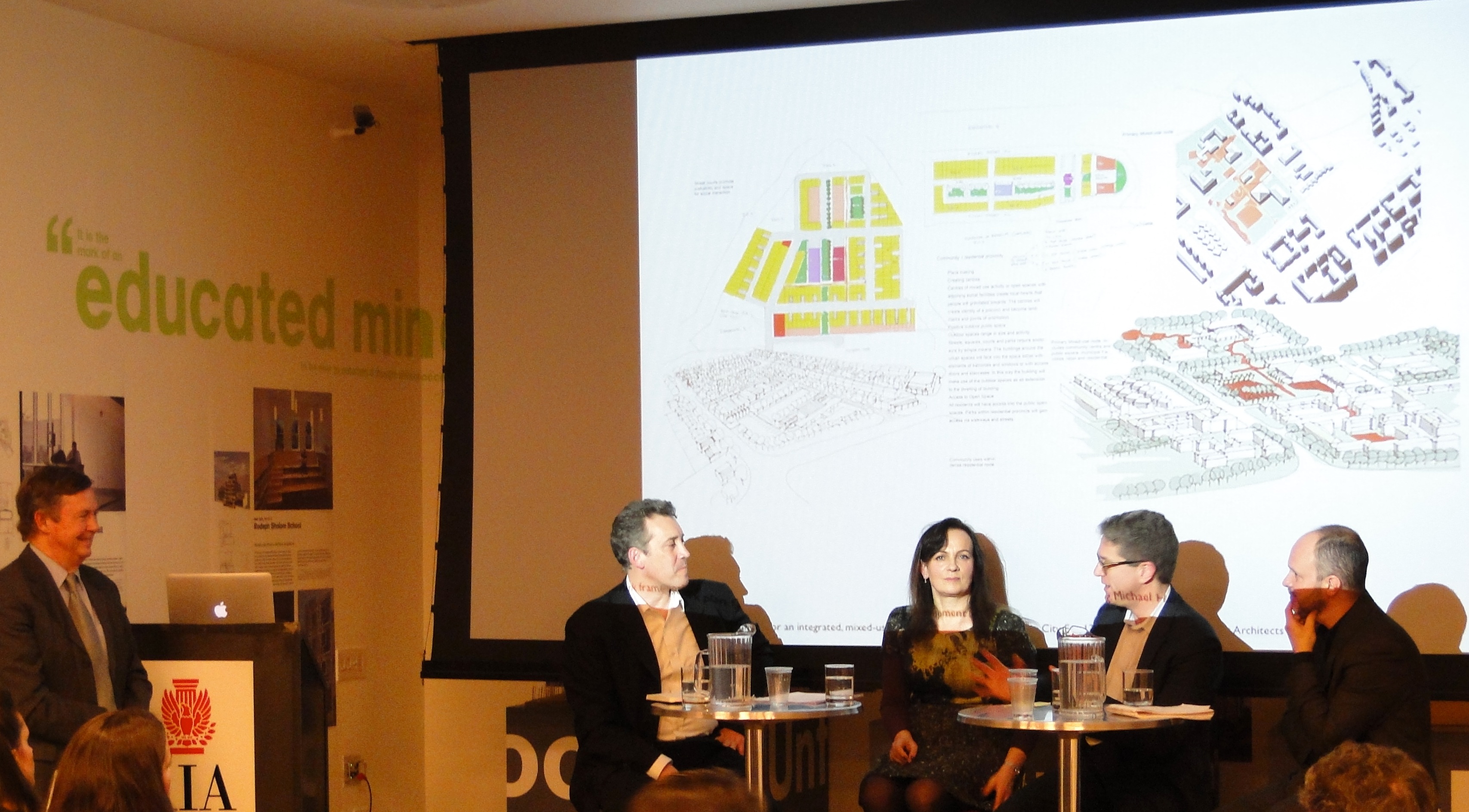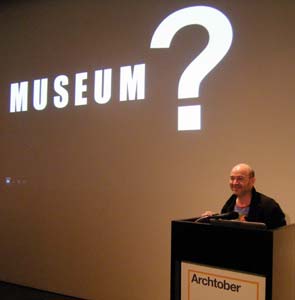After 13 years and almost 60 issues, I am stepping down as editor of Oculus. AIANY is bringing its publications program in-house, and now seems a good time to spread my wings and explore new horizons. Continue reading “Last Letter from the Editor”
Author: Kristen Richards, Hon. AIA, Hon. ASLA
2016 New York Architects’ Regatta Challenge: More Wind, Please
It was a splendid September day for the 15th annual Architects’ Regatta that set sail from its new mooring at Hudson River Community Sailing on Pier 66 in Hudson River Park at 26th Street. There was a slight problem: strong tides and practically no wind. The 20 lovely sailboats looked so small just bobbing around in the middle of the great Hudson River. A light breeze finally kicked up, and things got (slowly) underway – and a good time was had by (almost) all!
This year, the New York Architects’ Regatta Foundation raised $125,000+ for five river-based charities: SoundWaters; Sailing Foundation of New York; Hudson River Community Sailing; Rocking the Boat; and Riverkeeper. Continue reading “2016 New York Architects’ Regatta Challenge: More Wind, Please”
All Aboard, Hoist the Sails: 2015 New York Architects’ Regatta Challenge
It was a perfect September afternoon for the 14th annual Architects’ Regatta to set sail from its new mooring at Hudson River Community Sailing on Pier 66 in Hudson River Park. We Regatta groupies watched the race from the end of Pier 66 Maritime (this writer’s favorite new find!). It was a very different kind of Regatta than previous races at the Manhattan Yacht Club in Lower Manhattan (which, sadly, lost its lease). The Hudson is very wide at West 26th Street, and the 18 sailboats with their fearless crews looked very small in the middle of that big, big river. There were a few gasps from spectators as we watched the tiny boats maneuvering around the Manhattan on an AIANY Around Manhattan Boat Tour, several water taxis, and a lumbering garbage barge that barged right into their midst. Continue reading “All Aboard, Hoist the Sails: 2015 New York Architects’ Regatta Challenge”
Play Review: Oren Safdie’s “False Solutions”
After “Private Jokes, Public Places” (2003), and “The Bilbao Effect” (2010), Oren Safdie returns to New York as both playwright and director for the world premiere of his latest one-act play, “False Solutions,” now playing at La MaMa through 06.30.13. Continue reading “Play Review: Oren Safdie’s “False Solutions””
All Aboard a New Penn Station – Departing: Soon?
In April, the Municipal Art Society of New York invited four prominent NYC-based firms to take part in the MAS Design Challenge for a New Penn Station and the Next Madison Square Garden (MSG). On 05.29.13, a packed house at the TimesCenter (along with the rest of the world) got to see what Diller Scofidio + Renfro with Josh Sirefman (DS+R), H3 Hardy Collaboration Architecture (who stepped in when Santiago Calatrava bowed out), SHoP Architects, and Skidmore, Owings & Merrill (SOM) came up with. Continue reading “All Aboard a New Penn Station – Departing: Soon?”
Names in the News
AIANY President-elect Lance Jay Brown, FAIA, was on NBC News to discuss proposed New York State Good Samaritan legislation with Assemblyman Steven Englebright: “Lawsuit fears hinder volunteer work by architects.” Continue reading “Names in the News”
New Deadlines
The Oculus 2013 Editorial Calendar has been set. If you are an architect by training, or see yourself as an astute observer of New York’s architectural and planning scene, Oculus wants to hear from you! Projects/topics may be anywhere, but architects must be New York-based. Please submit story ideas by the deadlines indicated in the calendar to Kristen Richards, Hon. AIA, Hon. ASLA: kristen@ArchNewsNow.com. Read the latest issue of Oculus, Spring 2013, which is now available online!
05.01.13 Call for Proposals: 2013-14 City of Dreams Pavilion Design Competition
05.20.13 Call for Applications: 2013 Jason Pettigrew Memorial ARE Scholarship
06.14.13 Call for Submissions: FAR ROC [For a Resilient Rockaway] Arverne East Design Competition – Phase 1 Deadline
10.07.13 Call for Submissions: FAR ROC [For a Resilient Rockaway] Arverne East Design Competition – Phase 2 Deadline
Sighted
05.01.13: William Pedersen, FAIA, Founding Design Partner, Kohn Pedersen Fox Associates, and Jill N. Lerner, FAIA, are interviewed by NY1’s Roger Clark at the opening of “Design(in) The Heart of New York,” a two-month exhibition that showcases the 26-acre Hudson Yards development. The exhibition is on view at the Center for Architecture through 06.30.13. Continue reading “Sighted”
Masterplanning Futures: Adaptive Planning in the 21st Century
As an author, critic, and curator, London-based Lucy Bullivant, Hon. FRIBA, makes no small plans. So it was no surprise when she told the audience at the Center for Architecture on 02.14.13 that her latest book, Masterplanning Futures was four years in the making. She said she saw it as “a necessary project” because there are so few books on master planning that go much beyond descriptive analysis to offer comparative analysis. Continue reading “Masterplanning Futures: Adaptive Planning in the 21st Century”
Arthur M. Rosenblatt Memorial Lecture – Craig Dykers: Being Alone Together
Event: Annual Arthur M. Rosenblatt Memorial Lecture – Being Alone Together: Managing the Museum as Mausoleum Syndrome
Location: Center for Architecture, 10.17.12
Speaker: Craig Dykers, AIA, Senior Partner, Snøhetta
Organizer: AIANY Cultural Facilities Committee
Noting that he is not a historian, Snøhetta Senior Partner Craig Dykers, AIA, proceeded to deliver an engaging, thoughtful, and often amusing description of “a somewhat hypothetical history of the museum” as the 6th Annual Arthur M. Rosenblatt Memorial Lecture. He speculated, using a sometimes ironic, sometimes humorous slide show, that “museums began not so long ago with the opening of the salons of the wealthy” to show off their collections of “exceptional objects.” As these patrons died, they were interred in “lavish and well-appointed” mausoleums. Subsequently, museums began to resemble the mausoleums, as if the artworks and artifacts were “mummified or embalmed” like their benefactors. Museums were “freezers for art” and status symbols for the well-to-do.
As the population grew in the industrial era, Dykers said, “people sought substitutes for museums in sideshows and travelling exhibitions, and themed museums became increasingly popular.” Spotlighting everything from science to dollhouses, they “could become a form of propaganda.” Not only that, “things could actually be sold in museums to all these people now visiting them”; museums themselves started to look like big-box retail stores and shopping malls, or “windowless, consumer-friendly art closets” in Dykers’ words.
The underground art movement begat experimental museums, where “social places and places for art were intertwined,” Dykers continued, which pressured traditional museums into becoming “after-hours party houses.” On the upside, the trend also saw the “simultaneous growth of the museum as an educational institution.” Added to the mix now is digital technology, and the idea of museum-as-spectacle. The “spectacular museum is among the most recent incarnations of the fetishistic container for art.” Even without art, Dykers posited, “they can change their urban conditions simply by virtue of their shape or color.”
In Dyker’s view, the definition of a museum “remains in a state of revision and redefinition” and that it’s time to “return power to the art rather than to its container.” He considers that, first and foremost, “a museum should not control the activities of those within,” but rather be a place for “unique thoughts shared at the same time – a place to be alone together.” As for his own definition for “museum”: “A place for art with people in it. A place for people with art in it.”
This was clearly evident in his whirlwind presentation of several of Snøhetta’s museum projects, from Norway and Denmark to Guadalajara and San Francisco, and, of course, the National September 11 Memorial Museum Pavilion at Ground Zero.
